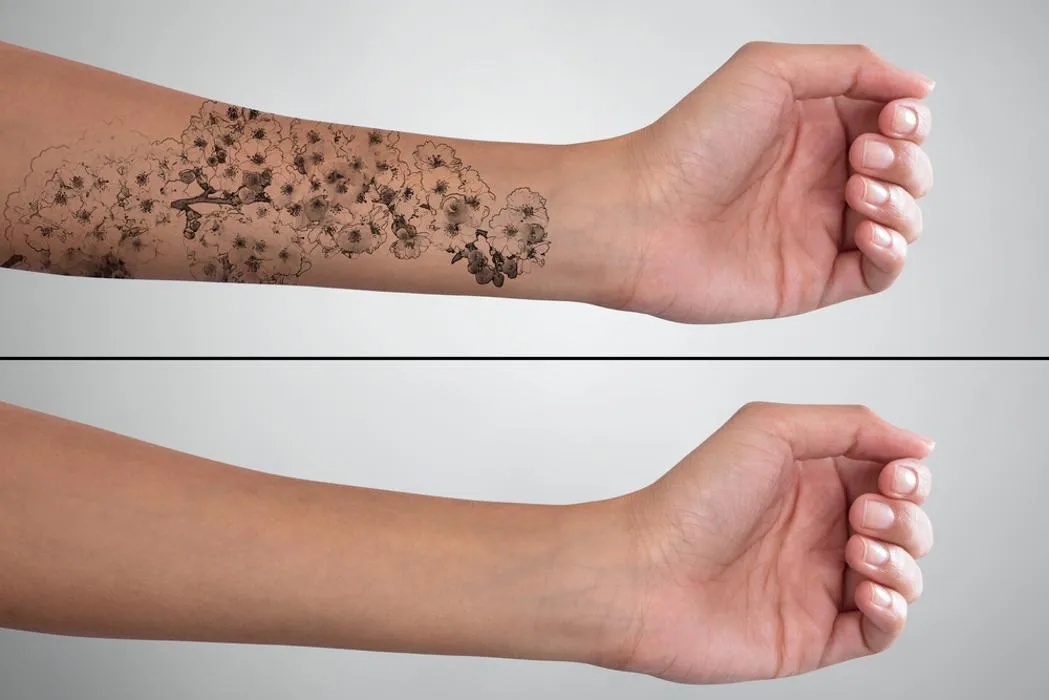Before your appointment, you will need to shave the area of skin where the tattoo is located.
On the day of the appointment, you will be provided with special goggles to protect your eyes. The skin may be numbed with a local anaesthetic cream.
A handheld device will be used to apply a laser to your skin. Some people describe the sensation as similar to an elastic band snapping against the skin.
The duration of the session will depend on the size of your tattoo, typically lasting between 10 to 30 minutes.
With each treatment, the tattoo should gradually become lighter.
After the procedure After the treatment, your skin may appear red and have a raised rash for a short period of time.
Applying an ice pack wrapped in a tea towel can help alleviate any discomfort.
There may be slight bleeding before the skin forms a scab. Using aloe vera gel or Vaseline can aid in the healing process.
Your skin will be more sensitive to the sun, so it is important to avoid sun exposure and tanning beds for at least a week after each treatment.
Cover the treated area with clothing and use a sunscreen with a minimum SPF30.

Things to avoid
– Picking or scratching the scab
– Using soap or perfumed products on the area for the first 48 hours
– Engaging in strenuous physical activities for a couple of days
– Swimming and using saunas until the scab has fallen off (as they may slow down the healing process)
Potential risks
There are some risks associated with tattoo removal, including
– Certain colors may not completely fade, with yellow, green, and purple ink requiring more sessions to fade compared to black, blue, and red ink.
– There is a small chance that your skin may temporarily become darker or paler than the surrounding skin.
– There is a slight chance of permanent scarring, with approximately 3 in 100 people developing a scar. What to do if you experience issues If you experience any problems with healing, rashes, or changes in skin pigmentation, it is important to contact the clinic where you received the treatment.

